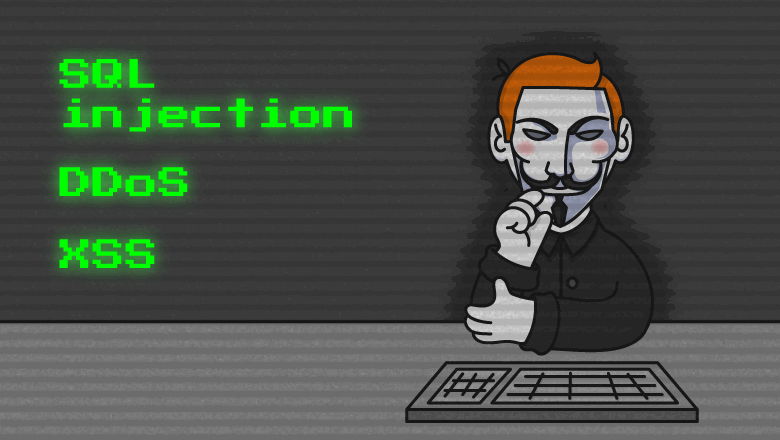A cyberattack is an attempt to access a system in order to steal, damage, or destroy data. Cyberattacks are organized by individual hackers or by hacker groups. The motives for these attacks may vary: ideas theft, blackmail, personal vendetta, etc.

There are several types of cyberattacks and threats:
You can reduce the risk of cyberattacks with a reliable software and a cybersecurity strategy.
A malware is often disguised as a reliable software or an email attachment (for example, a document). When running, the malware can disrupt the network, gain access to confidential data, etc.
A DDoS attack (a distributed denial-of-service attack) sends superfluous simultaneous requests to a server or a network. These requests flood the target machine, causing it to slow down their processing. Sometimes this cyberattack leads to the complete denial of service.
Phishing
Phishing is a cyberattack where an attacker deceives a victim by sending fraudulent emails using the name of well-known banks, brands, social networks and other services. A phishing email contains a malicious link that leads to a fake website disguised as the original one. This website often contains an authentication form: if the victim enters the personal data, the attacker will gain access to it. For example, if a user clicks on the phishing link, they are redirected to a fake website that requests a username and a password. This way attackers can access personal information and even bank accounts.
SQL injection
An SQL injection is an attack where a hacker exploits an application by inserting SQL code into a query template. If this attack is successful, the code changes the query's logic — after that the software performs actions defined by the attacker.
XSS (cross-site scripting)
XSS is a type of attack where malicious code or a script is inserted in a web page. The code/script interacts with the attacker's server and exchanges data with it. If a user opens the page that contains a malicious script, it can execute and steal the user's personal data.
Botnets
A botnet is a network with malicious bots. They are secretly installed on the victims' computers and can act in different ways: perform DDoS attacks, sort out all possible password options, etc.
Ransomware
A ransomware can operate in several ways: block the system, destroy or block the access to the data. The ransomware works until the user pays a ransom to the attackers. According to statistics, corporate systems are more likely to become victims of a ransomware.
The most famous attacks are the ones that affected popular platforms, social networks, or websites with the personal data of thousands or even millions of users. In this section, you can read about the most high-profile cyberattacks that led to biggest data leaks and money losses.
The U.S. Office of Personnel Management (OPM) data breach
This organization was hacked in 2015. The attackers stole information about 20+ million government employees as well as fingerprints of 5+ million people. The media called this data breach "one of the largest data breaches to ever hit the federal government ".
Equifax
In 2017, a hacking group accessed the internal servers of Equifax, an American credit bureau. As a result, they stole the credit card information and social security numbers of more than 140 million customers.
CNA Financial
In 2021, CNA Financial, an insurance company, became a victim of a ransomware attack. The employees lost access to corporate services, the confidential information was also stolen. CNA Financial was forced to pay a record-breaking ransom to the hackers — $40 million to unlock their systems.
Colonial Pipeline
In 2021, the computerized equipment of Colonial Pipeline, an oil pipeline company, was hacked. As a result of this attack, the company halted all pipeline operations, and the USA government had to locally declare a state of emergency. Colonial Pipeline paid 75 bitcoins (approximately $4,4 million at the time the cybercrime happened) to restore the pipeline operations.
Cryptocurrency
In the spring of 2022, three different lending protocols were attacked. In a week the hackers stole $15+ million from Inverse Finance, $625+ million from Ronin Network, and $3,5+ million from Ola Finance.
To prevent cyberattacks, you need to take proper measures:
0